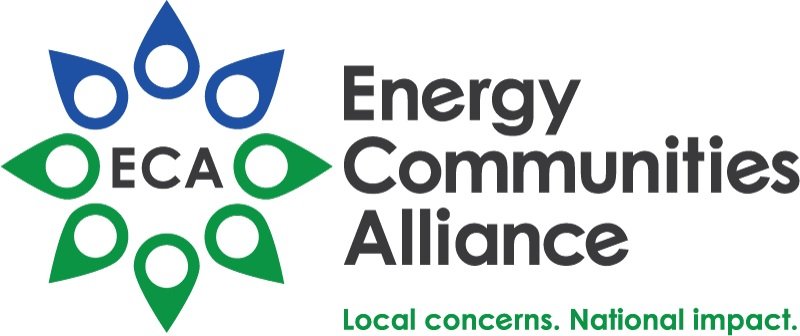IT’S THAT TIME OF YEAR – SETTING YOUR COMMUNITY'S FEDERAL PRIORITIES FOR THE NEW ADMINISTRATION
With a new year new Congress, and new administration here, it is time for ECA member local governments to create and communicate their priorities for the upcoming year and beyond.
As one ECA member recognized:
“We made sure that the [federal government] knew what we wanted and when they did not agree, we made sure that their bosses and our Congressional leaders knew our goals. The process never ended until the cleanup was complete. We had to visit Washington regularly, but it worked” - Mayor Dick Church, Miamisburg, Ohio
CREATING PRIORITIES
Priorities development relies on the knowledge of the activities in your communities, identifying opportunities, recognizing the new Congress and Administration’s goals and typically are site specific. Typically, ECA communities focus on the DOE mission and potential new missions, opportunities for local businesses, expansion of private development, and measures to reduce risks and liabilities, while always considering both short and long-term opportunities. These priorities must incorporate the community goals, technical feasibility, cost, time, and other issues.
ECA recommends that all local elected officials and decision-makers learn about and understand the history of their site, and the site’s goals to be able to provide context and effectively argue for fulfillment of a priority.
When considering what priorities to create and push, local governments should ask themselves the following:
What are the future use opportunities and goals for the site?
How can risks and costs to the community be reduced?
What priorities are a better fit for Congress rather than DOE, and vice-versa?
Is this a priority that can be campaigned with other groups?
In developing their priorities, communities should seek to establish a strategy for how to achieve the goals by integrating regulatory requirements, agency success criteria and orders, Defense Nuclear Facilities Safety Board (DNFSB) recommendations, and Congressional requirements and priorities, in addition to local interests and priorities.
COMMUNICATING PRIORITIES: WHO, WHEN, AND HOW
WHO: To ensure their priorities are heard, local communities must take the initiative and be ready to organize and engage a variety of groups, such as:
Local and federal Department of Energy and National Nuclear Security Administration (DOE) officials
Headquarters decision makers
Field Site Managers
Cleanup Contractors
Officials from other regulatory agencies
Congressional Delegations and key committees that oversee the appropriations and authorization issues (see ECA’s Site Profiles)
Local Media Outlets
WHEN: Understanding the timeline of the Congressional Budget Process is key when speaking with your Congressional Delegations. If the request is for funding a project, it is crucial to know whether it is in the DOE budget request and what the status of that bill is. See a simplified timeline below:
HOW: When entering a meeting with Congressional Staff and Delegates or DOE Staff and Leaders, knowing how to articulate your message successfully is crucial.
It is best to have three to five concise meeting talking points.
Understand what language, talking points, and themes the Administration is using and incorporate that into your messaging.
Utilize graphics, such as maps, charts, graphs, and one-pagers to best communicate your message and ensure your message is remembered.
Providing all meeting participants with your talking points prior to discussion to ensure that any background work can be accomplished before the meeting.
Prior to meeting with Hill Congressional Staff and DOE-HQ Staff, engage with local and district staff who can assist in relationship building.
There is immense value in meeting regularly with staff and creating a working and personal relationship with them. ECA believes that local governments’ successes in representing their communities are directly proportional to the time these community leaders engage with DOE at both the site and DOE headquarters. Additionally, communication with elected officials and congressional delegation can ensure that the site is receiving adequate funding and/or policy responses when needed.
Education and reviewing the process each year is key to that success, as new people are always entering the decision-making process, and that is especially true during a transition of administration. Congress, DOE and the regulators need to learn about the issues, and the only way for them to learn about, remember, and prioritize your community’s issues is to speak with them regularly about the issues that your community experiences.
Beyond leveraging relationships with site and federal officials, local governments that neighbor the same site should also consider coordinating with each other to align their efforts and communicate most effectively. A single voice will amplify their shared priorities and best communicate to the federal government what is in the public interest for a site’s future.
ECA’s EM priorities are set forth in our transition paper; Ensuring Long-Term Success: Recommendations for the Next Administration on the U.S. Department of Energy’s Environmental Management Mission.
For more information on how to create and communicate your priorities, visit ECA’s website.
